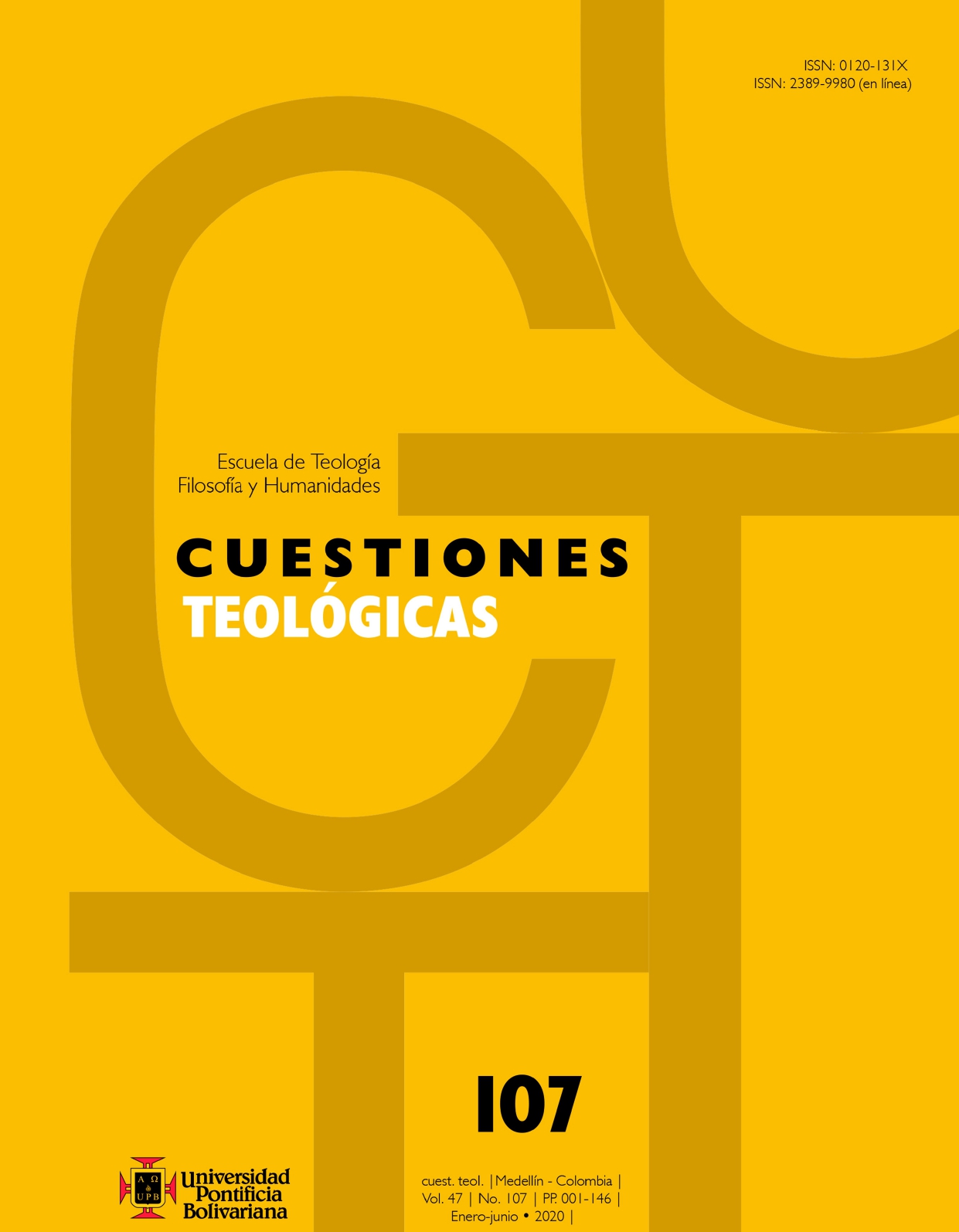The Historical Supernatural and the Church
Main Article Content
Abstract
The profound cultural change we are undergoing, due to the transition from modernity to postmodernity, poses a new challenge to ecclesiology: The transition from a metaphysical understanding of the Church to a salvific-historical one, already suggested by Second Vatican Council. Modernity wanted to eliminate the supernatural, but de Lubac’s and von Balthasar’s Nouvelle Théologie rose to that challenge. The article aims to present theology from the perspective of the historical supernatural, which was addressed by von Rad in exegesis and by Fackenheim and Heschel in Jewish theology. Within Catholicism, the issue of the supernatural in history was addressed by Daniélou and von Balthasar. Bearing this in mind, after considering the crisis of culture in modernity, the article first addresses, based on the aforementioned authors, the historical supernatural according to the Holy Scriptures. Then, it considers the historical supernatural as the humus of the Church, which provides both an identity of her own and a source of resilience to significant changes throughout history. To understand the development process of the Church, it is compared to the work of creation, considering new biblical hermeneutic. Just like cosmos is the clay that the Lord uses to create the human being, because we are all made of star stuff, so is history the one that the Spirit uses to build the Church. Regarding biblical hermeneutics, the article considers that the interpretation of the Old Testament remains within the New Testament, that is, that the writers of the latter read the first, just like the prophets read the traditions of Israel. It is not intended to present the Church that is being developed in postmodernity, but only to introduce her historical supernatural foundation. Neither it is the purpose to address the ecclesiology developed by theologians of science, though it considers some of their ideas regarding such issue.
References
Barsotti, D. (1967). El apocalipsis. Una respuesta al tiempo. España, Madrid: Sígueme.
Boersma, H. (2012). Nouvelle Théologie and Sacramental Ontology. A Return to Mystery. Oxford: Oxford University Press.
Buber, M. (1960). The Prophetic Faith. New York: Harper & Row.
Connor, S. (ed). (2004). The Cambridge Companion To Postmodernism. Cambridge: Cambridge University Press
Daniélou, J. (1953). Essai sur le mystère de l’histoire. París: Seuil.
De Lubac, H. (1967). Paradoxe et Mystère de l’Eglise. París: Aubier.
De Lubac, H., (1968). Méditation sur l’Eglise. París: Aubier.
Dulles A., S.J. (1975). Modelos de la Iglesia. Estudio crítico sobre la Iglesia en todos sus aspectos. Bogotá: Sal Terrae.
Dunn, J., & Martínez, S. F. (2013). El cristianismo en sus comienzos: Comenzando desde Jerusalén. Navarra: Editorial Verbo Divino.
Gillman, N. (2000). Contemporary Jewish Theology. The Blackwell Companion to Judaism. Oxford: Blackwell, 441-60.
Eliade, M. (2009). El mito del eterno retorno. Madrid: Alianza.
Flynn G., Murray P.D. (2013). Ressourcement. A Movement for Renewal in Twentieth-Century Catholic Theology. Oxford: Oxford University Press.
Fackenheim, E.L. (2002). La Presencia de Dios en la historia. Madrid: Sígueme.
Ford, David F., (ed). (2005). The Modern Theologians. An Introduction to Christian Theology since 1918. New Jersey: Blackwell Publishing.
Galeano, A. (2010). Visión Cristiana de la Historia. Ensayo de Escatología. Bogotá: San Pablo.
Galeano, A. (2011). Idea Cristiana del Hombre y la Ciberantropología. Ensayo de antropología latinoamericana. Bogotá: San Pablo.
Galeano, A. (2017). Una eclesiología histórica-escatológica para la postmodernidad. El cambio de paradigma dentro de la orientación postmoderna hacia la historia y la hermenéutica. Cuestiones Teológicas, 44 (102), 397-421.
Haight, R. (2004). Christian community in history (Vol. 1). Londres: A&C Black.
Heschel, A.J. (1982). Man is not alone: A Philosophy of Religion. Portland: Farrar, Straus & Giroux.
Heschel, A.J. (1973). Los profetas II. Concepciones históricas y teológicas. Buenos Aires: Paidós.
Kevin J. Vanhoozer (ed). (2003). The cambridge companion to postmodern theology. Cambridge: Cambridge University Press.
Lindbeck, G. A. (2003). The church in a postliberal age. Cambridge:
Wm. B. Eerdmans Publishing.
Mead, W.R. (2008). God and Gold: Britain, America and the Making of the Modern World. Nueva York: Vintage.
Metz, J.B. (1972). Antropocentrismo cristiano. Sobre la forma de pensamiento de Tomás de Aquino. Madrid: Sígueme.
Moltmann, J. (1974). Conversión al futuro. Madrid, Barcelona: Marova-Fontanella.
Pablo VI. (1986). Exhortación Apostólica: el Anuncio del Evangelio hoy. Bogotá: Paulina.
Ratzinger, J. (1971). The Theology of History in St Bonaventure. Chicago: Franciscan Herald Press.
Richard, L. (1966). El Misterio de la Redención. Madrid: Península.
San Agustín. (1964). Enarraciones sobre los Salmos. Tomos I al IV. Madrid: BAC.
Scott, P., & Cavanaugh, W. T. (Eds.). (2004). The Blackwell companion to political theology. Oxford: Blackwell.
Sim, S. (2013). The Routledge companion to postmodernism. Londres, Nueva York: Routledge.
Vatican II, Documentos, BAC Madrid 1976, L.G.
Von Balthasar, H. (1955). La Théologie de l’Histoire. París: Plon.
Von Rad, G. (2009). Teología del Antiguo Testamento II. Las Tradiciones proféticas de Israel. Madrid: Sígueme.
Walls L. (ed.). (2010). The Oxford Handbook of Eschatology. Oxford: Oxford University Press.
Ward, G. (ed.). (2005). The Blackwell Companion to Postmodern Theology. New Jersey: Blackwell Publishing.






